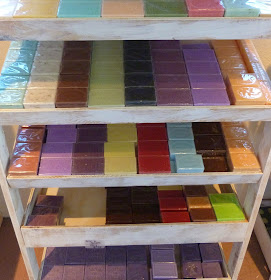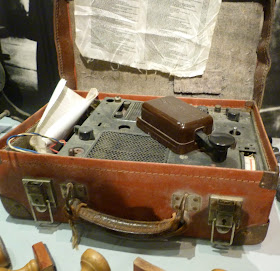"These few flowers were picked by moonlight a few hours ago by the faithful friends you have in France."
During the darkest days of World War II when France was under Nazi occupation, it was inconceivable to most people that there might be an air service across the Channel. But there was, run by the secret intelligence services in Britain and the French resistance, and the start of the dangerous journey was often this house, Bignor Manor in West Sussex.
Nestled at the foot of the South Downs, it is more a pleasant-looking farmhouse than a manor house. It was rented in the 1940s by Anthony Bertram and his wife Barbara, who lived there with their two young sons and a menagerie of animals. An author and art critic, Tony Bertram had served in the 1914-18 war, and though he was too old for the front line this time, he was recruited into MI6 on account of his fluent command of French. Given the title of Major, he became the liaison officer for the French agents arriving and departing via the moonlight flights run by RAF Tangmere.

Barbara Bertram played a vital role, too. Resourceful and calm, she welcomed these men (and occasionally women) into her home. Often their introduction to her was over a breakfast she had cooked, using eggs from the chickens, at 4am. As the war went on, she found she was effectively running a hostel for spies and saboteurs, with little outside assistance and in conditions of utmost secrecy. No one in the village of Bignor was allowed to know what was happening - and neither, amazingly, did her children. When numbers grew, and the men became impossible to hide, it was put about that she was looking after injured French servicemen.
This led to some amusing episodes of light relief in what was always a tense situation as they passed the hours and days until full moon and the risky ascent in a Lysander plane to their renew their fight. The French and others involved in the operations would play darts in a local pub, the White Horse at Sutton (pictured below). During one match against the regulars, one of the French with an arm in a sling (purely for effect) astonished his adversary by a brilliant performance despite using his "wrong" arm.
More than two hundred French personnel passed through Bignor Manor during the course of three years. Throughout this time, the Bertrams offered practical assistance and the comfort of being looked after in the atmosphere of a spirited house party. The clandestine flights took place during the nights of full moon; between the moons, Major Bertram trained them in finding landing fields in France and organising operations on the ground there.
When the men wanted calm, they helped in the garden and relied on Barbara's sympathetic ear and understanding. When they wanted company, she would drop everything to make up a four at bridge, or play darts, or go for a walk. Her discretion and gaiety made her immensely popular. "The ones who were leaving were mostly there for two or three days; but they were nervous, short-tempered, impatient, and let's face it, scared stiff. Difficult guests, but so good was she with them that I have often heard them say, 'Our best memory of England was the time we had to spend in Mrs Bertram's house,'" recalled one high-ranking member of the Resistance.
One tiny incident illustrates why Barbara Bertram was so loved. When a group arrived off the night flight from France, their boots were often very muddy from the field where the plane had taken off. Barbara collected this mud and grew mustard and cress on it, to be able to offer the men salad grown on French soil.
This framed memento at the RAF Tangmere museum contains pressed lilies of the valley, long since faded, but the sentiments are still poignant, as is the reference to moonlight: Dear Mrs Bertram, These few flowers were picked by moonlight a few hours ago by the faithful friends you have in France. Hoping you will receive them in good condition. We remain yours devoted, Roddy and Armand.
The National Portrait Gallery in London has two photographs of the Bertrams, both taken in June 1932. Almost ten years before they would be called on for their unique contribution to the war effort, Barbara looks classically serene before a religious background. There is a sense of quiet goodness in the picture.
Tony is serious, the man of letters at a desk, with a steely determination in clever eyes.
In
The Sea Garden, I have changed the names of many of the real-life characters whose stories inspired the novel. But Tony and Barbara Bertram appear in cameo as themselves, in the real Bignor Manor, at one of the many jolly gatherings that took place when Sussex fog descended, blocking out the light of the moon and the possibility of night flight from Tangmere. It was almost possible to forget that they were involved in a risky game, that a silk scarf was a map of Europe and a leather purse contained a lethal weapon.
After the war, Barbara Bertram wrote a memoir of her experiences at Bignor, "when it was still fresh in my mind and going round and round in my head". It was finally published in 1995 as a delightful small book,
French Resistance in Sussex. I drew on several of the incidents for
The Sea Garden.
Thanks to
Tangmere Military Aviation Museum for allowing me to take photographs of the exhibits there. Next post: The secret weapons.

.jpg)













































